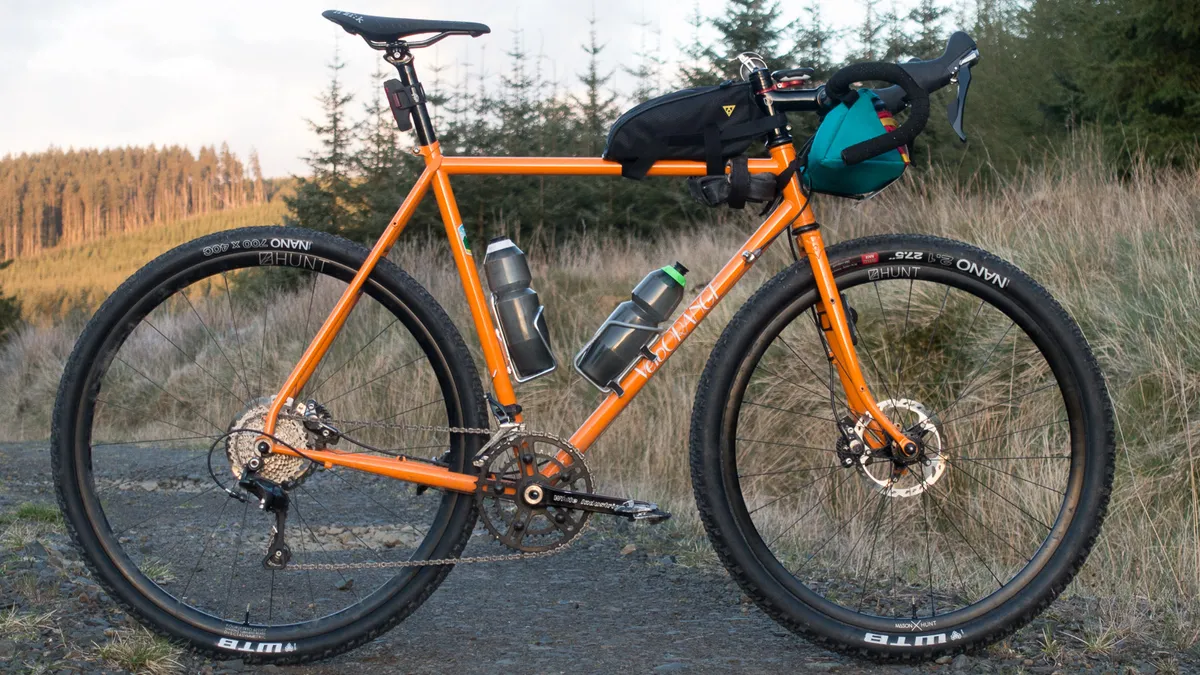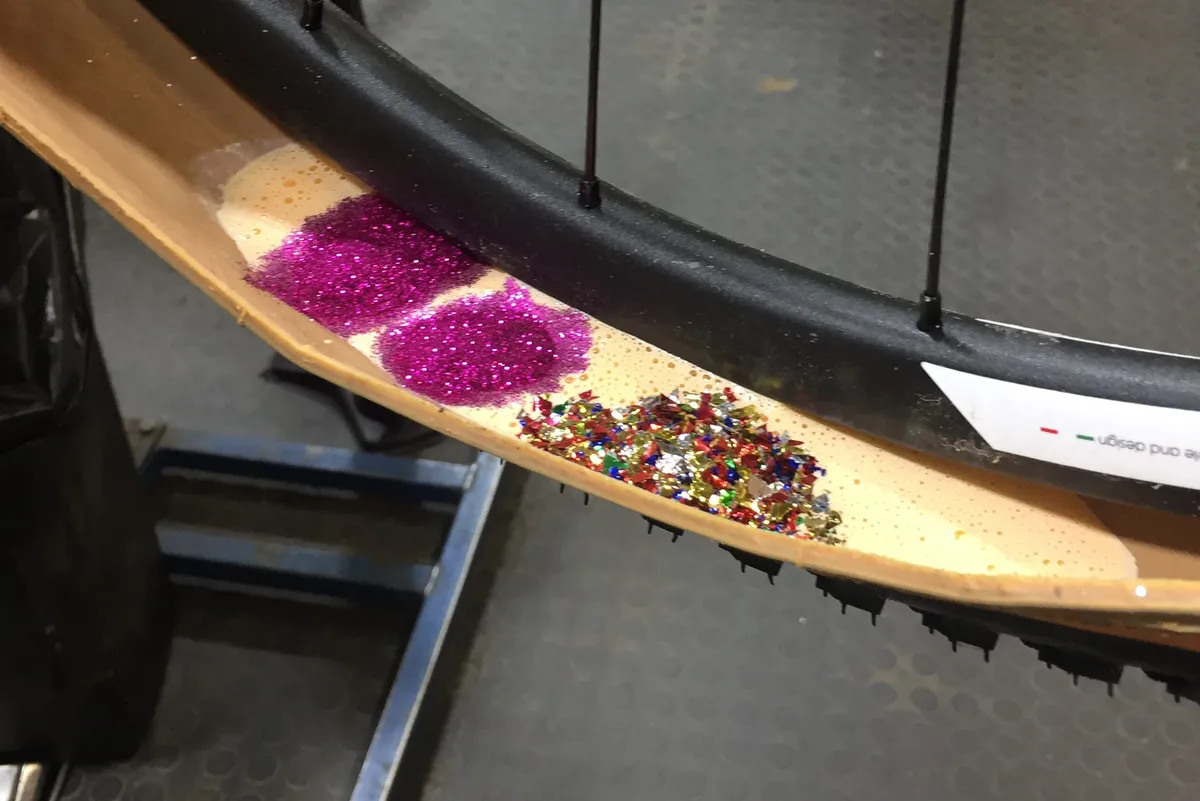Perhaps haunted by some recurring memory of the infamous Trek 69er, I’ve been experimenting with running different sized wheels on my Velo Orange Pass Hunter for the last few months.
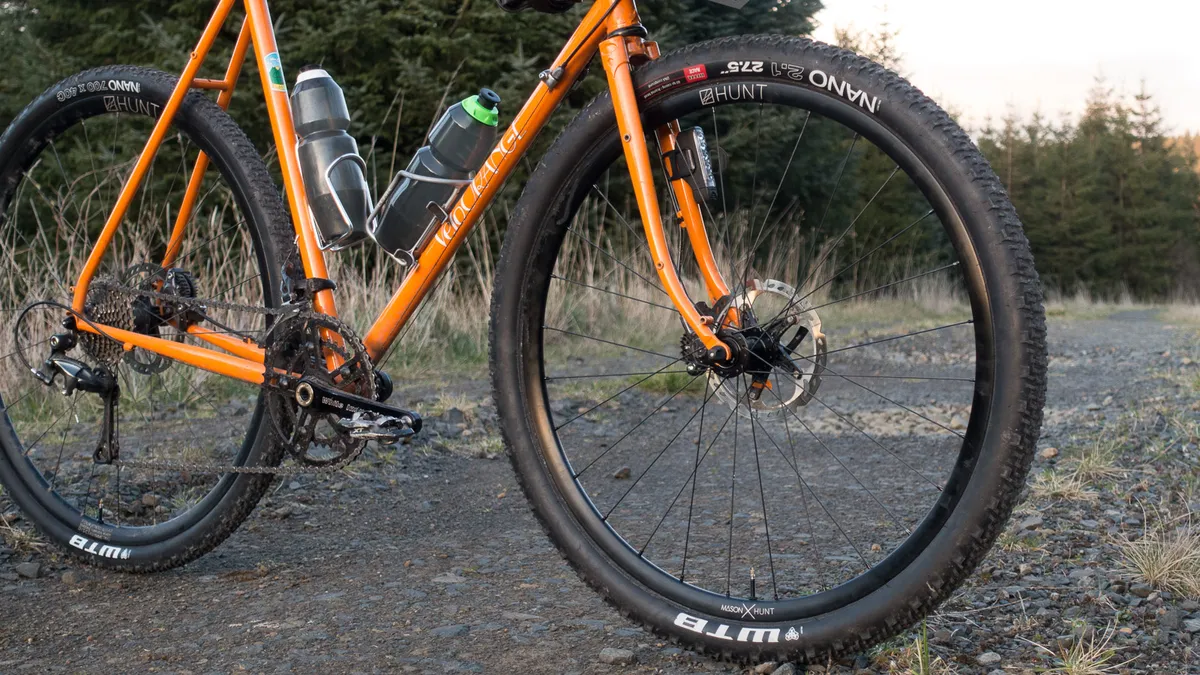
This setup actually came about somewhat accidentally— I’d hoped to run 650b wheels at both ends of the bike for this year's edition of The Dirty Reiver, but after the tyres I had ordered failed to show up in time for the race, I was left to go on the scrounge for what was available to borrow (steal) from one of the other test bikes we have at BikeRadar HQ.
In the end, all that I could find was a pair of 650b 2.1” WTB Nano tyres — admittedly not a bad predicament to be stuck in as these are some of my favourite tyres for gnarly gravel riding — but I quickly discovered that the rear tyre was a little too beefy for the Pass Hunter.
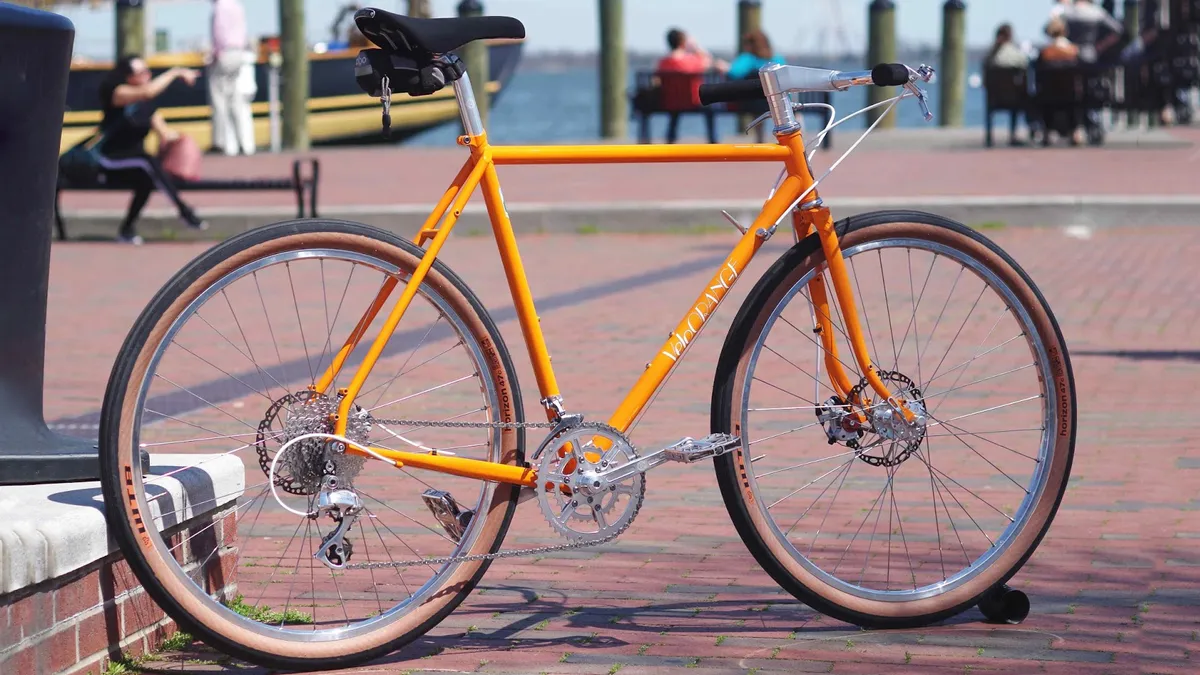
At this stage, it’s worth noting that while the Pass Hunter is not designed around 650b rubber, Velo Orange has experimented with running plump, mid-size wheels on the frameset to great success.
The difference here is that I was trying to jam a 2.1” 650b mountain bike tyre into a randonneur/audax bike, so it’s not entirely surprising that the knobs of the big tyre scuffed the chainstays.
However, the tyre fitted inside the capacious flat-crown fork with absolutely no problems, so I decided to run this up front with a matching 700x40mm Nano out back.
Thus the ‘Wheel Mullet’ was born; small but squidgy party-time upfront, with the 2.1” tyre providing a degree of ‘suspension’ and float coupled with the faster rolling 700x40mm tyre out back to keep things moving.
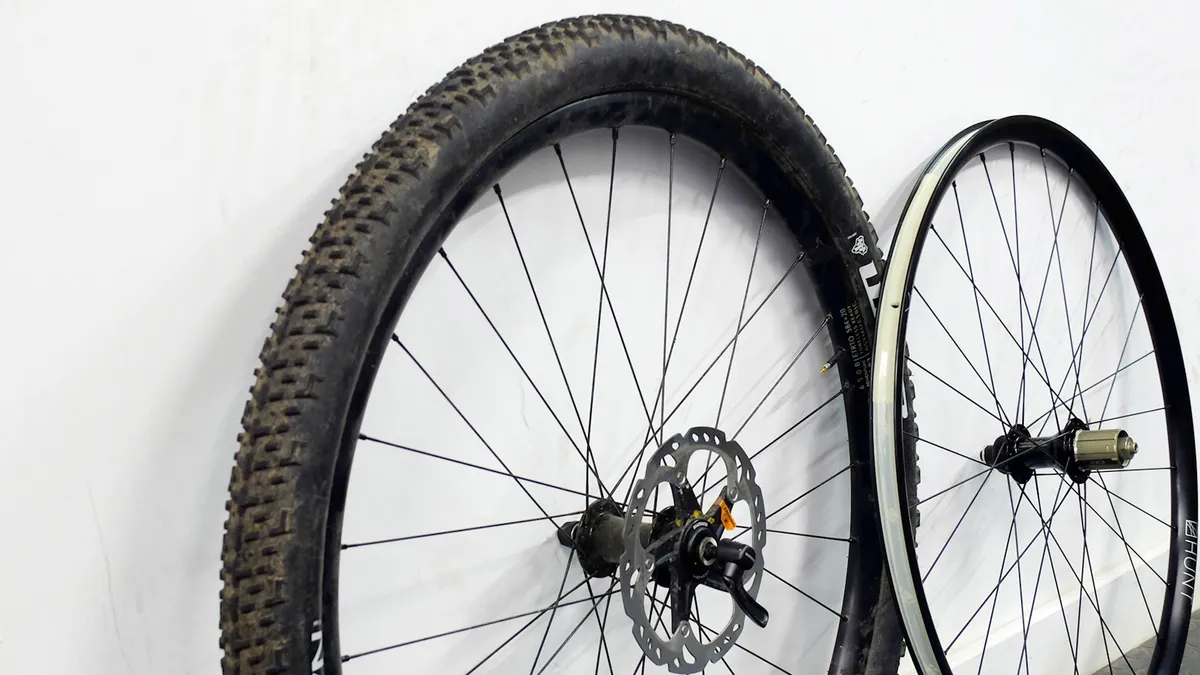
Hunt was kind enough to supply a pair of its 650b MASONxHUNT Adventure Sport Disc wheels for this chunky tyre experiment, and in my moment of panic, I also nabbed the brand's 4Season disc rear wheel from my Fairlight Strael test bike.
While there were plenty of other options I could have used from my hoop-hoard that wouldn’t have involved removing tyres, swapping cassettes and fitting rotors, the idea of riding a set of (visually) mismatched wheels fills me with a sense of crippling dread, so the fiddly option it was to be.
Naturally, I ran both tyres set up tubeless. The tubeless-friendly rim profile of the Hunt wheels made for an exceptionally easy setup and both tyres seated on the first go.
Handling and geometry of mismatched wheels
Of course running a smaller wheel on one end of a bike will invariably funk up its geometry a little.
While the overall diameter of a 650b wheel — particularly when shod with a tyre as big as the one I used — isn’t that different to a 700c wheel, fitting the smaller wheel to the front did lower the front end, making the head angle a touch steeper.
This made me a little nervous as — even if the change was marginal — the Dirty Reiver is characterised by extremely fast, wide-open and rocky descents, and doing anything that was going to affect the stability of the bike was quite off-putting.
However, the added control that the super grippy and ‘floaty’ tyre afforded more than made up for any change and I was able to tackle descents with truly reckless abandon.
A low-pressure race
As I hadn’t had time to experiment with the setup before the race, I ran both tyres at a slightly higher pressure than I usually would to begin with, letting a little air out throughout the length of the day until I felt comfortable on even the gnarliest terrain.
While I never got a chance to measure the exact pressure I settled on during the race — I was far more interested in gorging myself on any food that came near me after spending 9hrs in the saddle and finishing 66th overall — on the rides that followed the Reiver, I settled on about 20psi for the front with about 25psi at the back.
While this may seem perilously low for a gravel bike, it feels absolutely superb on fast descents and rather interestingly, the marginally steeper head angle combined with this low-pressure tyre also makes for a supremely nimble ride in slow speed, techy terrain.
Is mixing wheel sizes the future?
While I can’t imagine for a minute that hoards of riders will be looking to set their bikes up in a similar fashion to mine, I have finished this experiment utterly convinced that 650b wheels are the best option for hardcore gravel riding.
While a 40mm tyre set up tubeless — tubes are only for the most truly masochistic gravel riders — will suffice for most rides, the extra control and comfort afforded by a wide tyre is unbeatable and I’ll be looking to build a dedicated ‘road plus’ bike for my next gravel adventure.
An orange shapeshifter
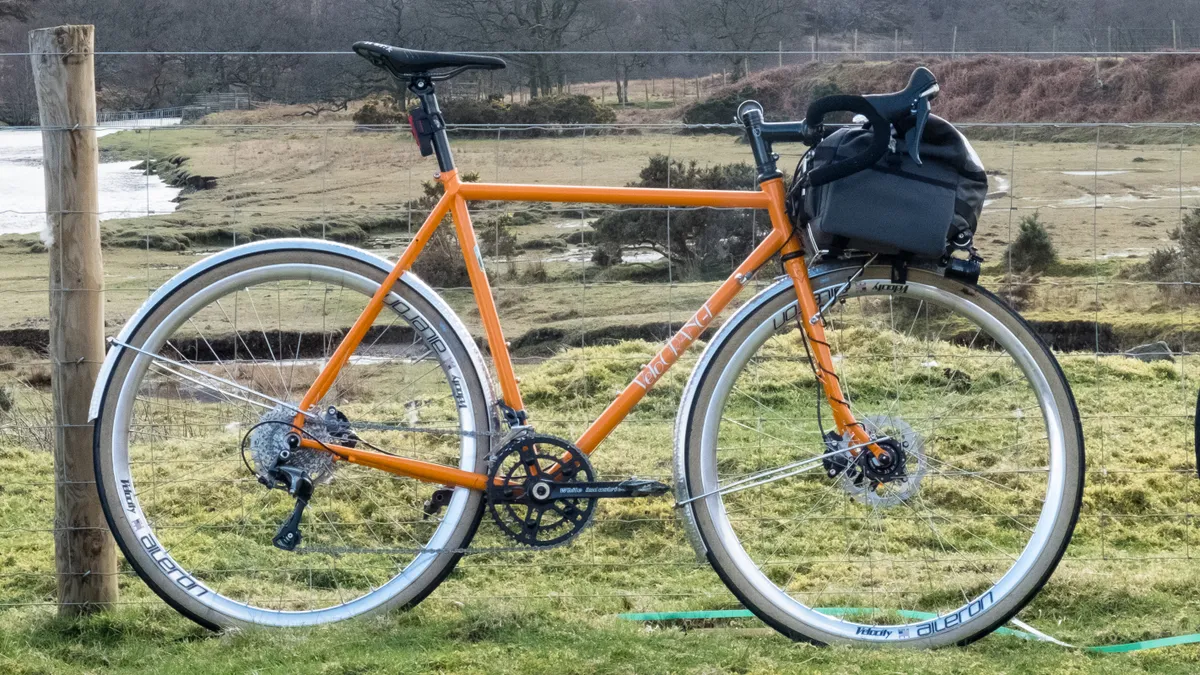
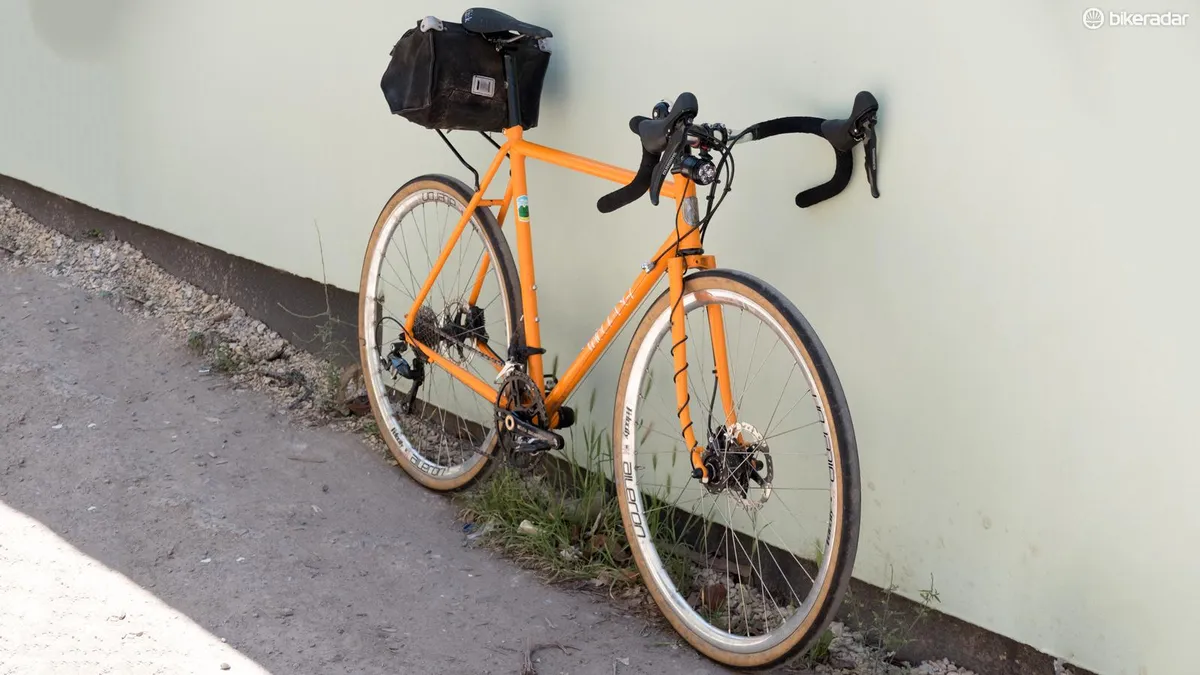
While I plan on discussing my time with the Velo Orange Pass Hunter in greater detail at a later date, it’s worth noting that this isn’t the only form that the bike has taken since I first received it back in December.
I was primarily interested in running the bike up as a do-it-all randonneur machine and ran it in a fully be-fendered and rack-ed build for a few months, followed by this gravel oriented guise and now, in a more stripped down long-day road focussed mode that I’ve coined as #randolite.
The Pass Hunter Disc is available to order direct from Velo Orange. And thanks to Fresh Tripe, the UK distributor of Velo Orange and other delightful parts, for hooking me up with this frame.
Have you done any freaky experiments like this one? Be sure to share any photos of your creations in the comments below!
